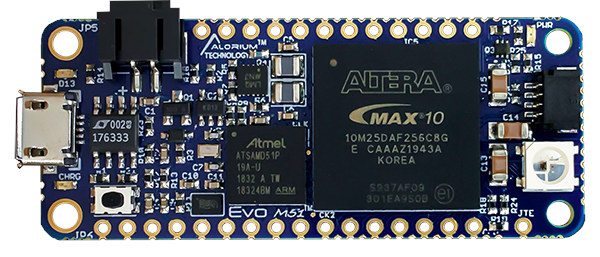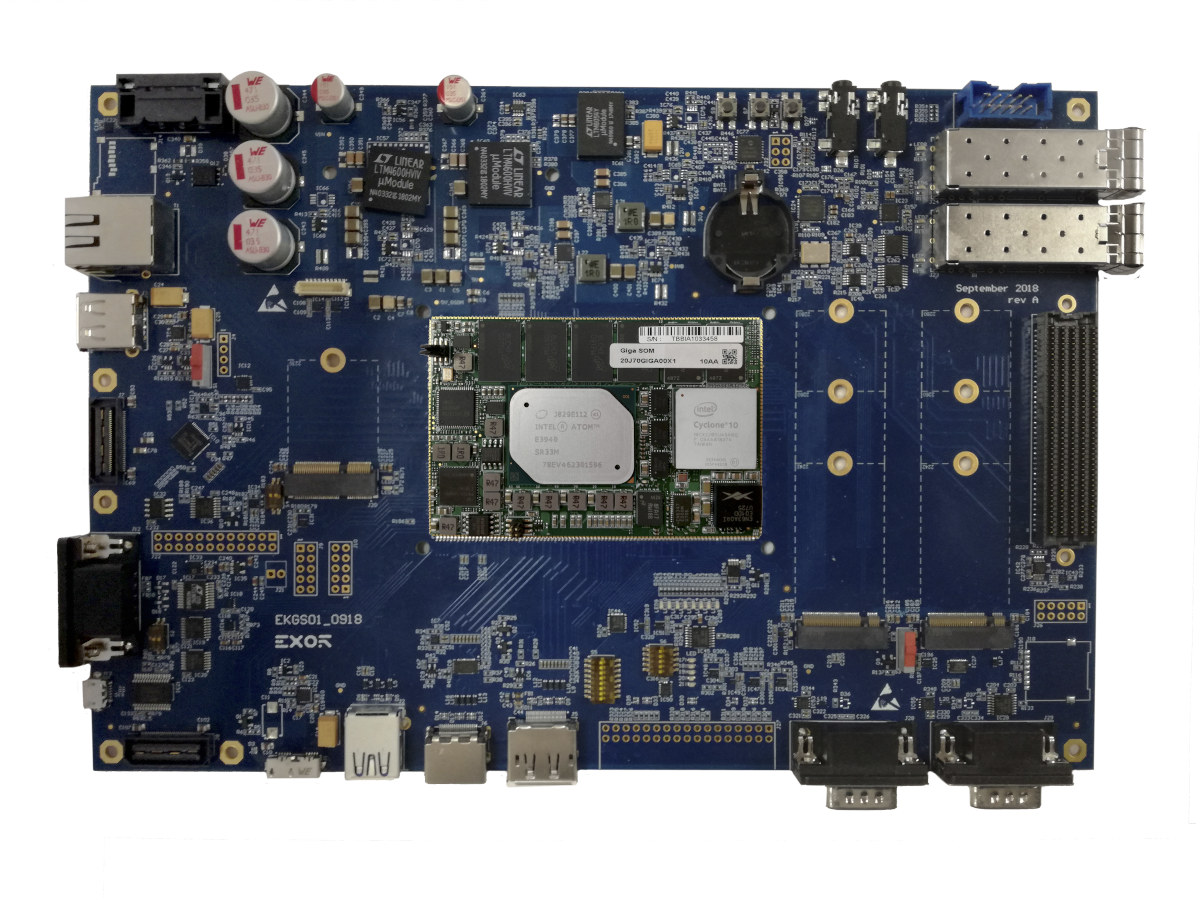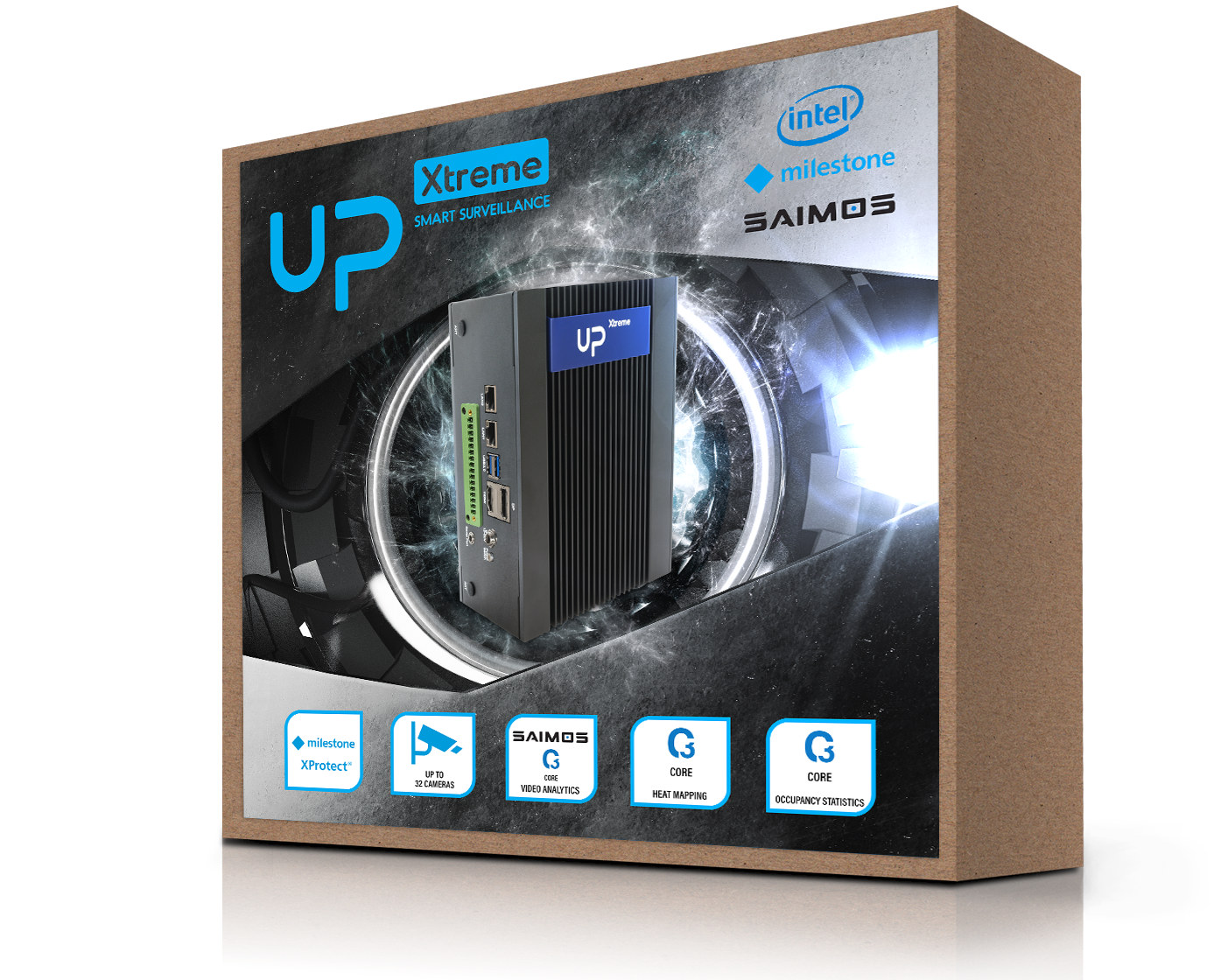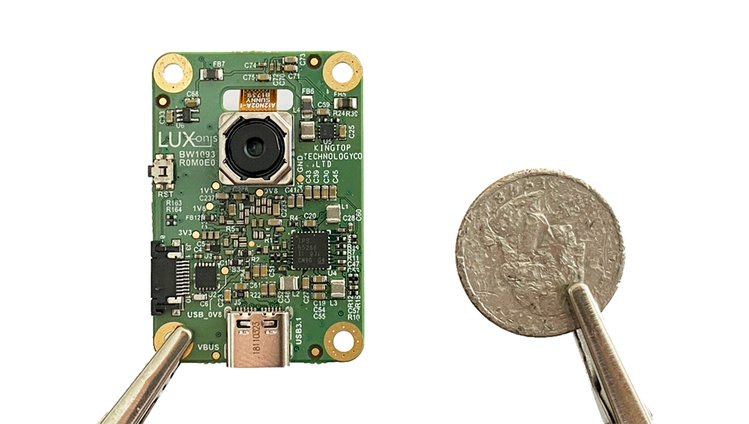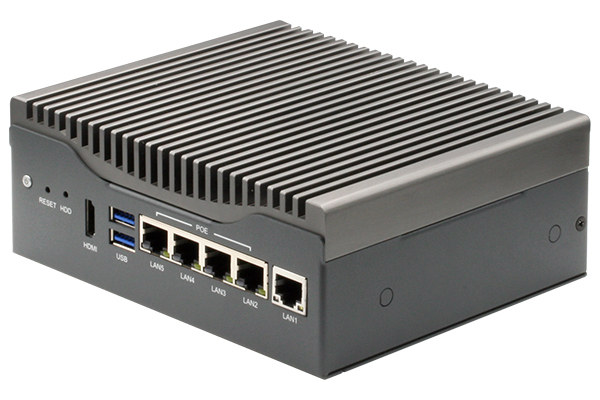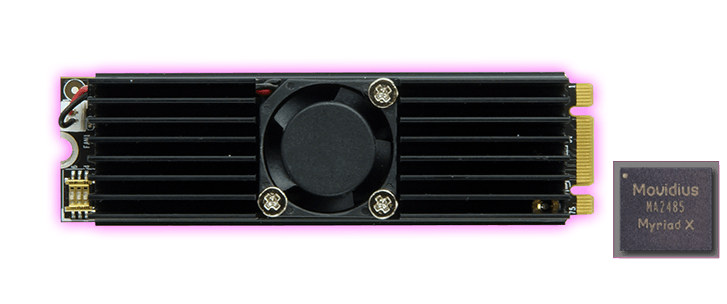First introduced in 2017, Arrow Chameleon96 96Boards SBC comes with an Intel / Altera Cyclone V SE SoC featuring a dual-core Arm Cortex A9 processor clocked at up to 800 MHz and FPGA fabric with 110K Logic Elements. It used to sell for $129, but Arrow & appears to have a promotion now where the Novtech board sells for just $31.34 with free shipping[Update: all available boards are gone, and the product is now out of stock]. It looks like a good opportunity for people interested in playing around with an Arm Linux FPGA platform. Here’s a reminder of Chameleon96 board specifications which the company shamelessly copied from CNX Software: SoC – Intel PSG / Altera Cyclone V SE 5CSEBA6U19I7N with a dual-core ARM Cortex A9 processor @ up to 800 MHz and FPGA fabric with 110K Logic Elements Chips, Ports, and Features connected to FPGA: Integrated USB-Blaster II JTAG […]
Feather-Sized Evo M51 Board Combines Atmel SAMD51 MCU with Intel MAX 10 FPGA
Arduino unveiled its first FPGA board around two years ago with MKR Vidor 4000 combining an Intel Cyclone FPGA with Microchip SAMD21 Cortex-M0+ MCU in a form factor similar to Arduino Zero. But in case you are looking for an even smaller Arduino compatible FPGA board, Alorium Technology’s Evo M51 might be exactly what you are after. The Adafruit Feather-sized board is equipped with an Atmel SAMD51 Arm Cortex-M4F microcontroller coupled with an Intel MAX 10 FPGA. Evo M51 specifications: MCU – Microchip (Atmel) SAMD51 Arm Cortex-M4F microcontroller clocked at 120 MHz with 512KB flash, 192 KB SRAM FPGA – Intel MAX 10 (10M25) FPGA with 25K LEs, 675Kbit block memory Storage – 2MB external flash USB – 1x micro USB port for power and programming I/O Digital 55x Total Digital I/O – 21x through-hole/castellated vias, 34x additional castellated-only 6x digital pins shared with analog pins 3.3V Inputs, 3.3V Outputs […]
Exor GigaSOM GS01 SoM and Devkit Combine Intel Atom E39xx CPU and Cyclone 10 GX FPGA
EXOR International has worked in collaboration with Arrow Electronics to design and manufacture GigaSOM GS01 system-on-module combining an Intel Atom E39xx Apollo Lake processor and Cyclone 10 GX FPGA. The module and corresponding development kit are specifically designed for smart factory & “Industrie 4.0” applications with the processor running Intel’s time-coordinated computing plus a real-time “IoT stack”, and the FPGA supporting IEEE 802.1 time-sensitive networking (TSN) and 10Gbps connectivity. GigaSOM GS01 module specifications: Apollo Lake SoC (one or the other) Intel Atom x5-E3930 dual-core processor @ 1.3 GHz / 1.8 GHz (Turbo) with 12EU Intel HD Graphics 500; 6.5W TDP Intel Atom x5-E3940 quad-core processor @ 1.6 GHz / 1.8 GHz with 12EU Intel HD Graphics 500; 9.5W TDP Intel Atom x7-E3950 quad-core processor @ 1.6 GHz / 2.0 GHz with 18EU Intel HD Graphics 505; 12W TDP FPGA – Intel Cyclone 10 GX up to 220 KLE System Memory […]
UP Xtreme Smart Surveillance Combines Whiskey Lake SBC, Myriad X VPUs, and Video Management & Analytics Software
We’re seeing more and more computer vision products with built-in artificial intelligence accelerated features like face recognition or object detection including AI cameras, facial recognition systems, and AI NVR systems. It’s great as a consumer because of less frequent and more accurate alerts in security camera systems but more worrying as a citizen due to mass surveillance. But the trend is here to stay, and AAEON has just announced the UP Xtreme Smart Surveillance solutions powered by UP Extreme Whiskey Lake SBC with either an Intel Core i5-8365UE or Intel Core i7-8665UE processor, as well as two Intel Movidius Myriad X VPUs using OpenVINO SDK. The system also leverages Milestone video management software (VMS) and SAIMOS video analytics software. Based on the photo above, the hardware looks to be UPX-Edge Embedded Computer which we previously covered in details at launch last December. Instead of hardware, the focus of Up Xtreme […]
megaAI 4K AI Camera Board Features Movidius Myriad X VPU (Crowdfunding)
megaAI 4K AI camera board reminds me of Kendryte K210 based boards such as Maixduino used for computer vision for tasks such as object tracking or face recognition, but instead of just handling QVGA at around 15 to 18 fps, megaAI can supports inference at 4K resolution up to 30 fps. The tiny board can achieve this feat by leveraging the 4 TOPS of AI processing power delivered by Intel Movidius Myriad X VPU (Vision Processing Unit) while consuming only around 2.5 Watts. megaAI board specifications: AI Accelerator – Intel Movidius Myriad X VPU delivering up to 4 TOPS (Trillion Operations Per Second) Camera – 12 MP 4056×3040 Auto-Focus (8cm-∞) camera with 81 degrees horizontal Field of View (HFOV) Video RAW Output – 4K @ 60FPS or 12MP @ 30FPS (with USB3.1 Gen2 Host) Hardware Image Encoding – 12 MP JPEG encoding Hardware Video Encoding: 4K H.265 encoding at 30 […]
AI Network Video Recorder Combines Intel Atom X5 E3940 SoC, Two Myriad X VPUs, and Five Ethernet Ports
AAEON seems to launch a new “AI Embedded Box PC” monthly either equipped with an NVIDIA Jetson module or a solution combining an Intel processor and a Myriad X VPU card. Here’s another one with AAEON VPC-3350AI AI edge computer powered by an Intel Atom X5 E3940 Apollo Lake processor, as well as two Myriad X VPUs for AI acceleration, and equipped with five Ethernet ports – four of which supporting PoE – to get video data from IP cameras or other networked video sources that makes it especially suitable as an AI network video recorder. VPC-3350AI specifications: SoC – Intel Atom X5-E3940 quad-core Apollo Lake processor @ 1.6 GHz / 1.8 GHz with 2 MB cache, 12 EU Intel UHD graphics; 9.5W TDP; Option for Celeron N4200/N3350 and X5-E3950) System Memory – Up to 8GB, DDR3L via 204-pin SODIMM socket Storage – 1x SATA port for 2.5″ drives AI […]
Arrow Embedded To Go Free Online Conference, and 3,000 Development Boards Giveaway
With the coronavirus outbreak on-going, many events are either canceled or moving online. Arrow Electronics has now announced what appears to be a completely new online event. Embedded To Go virtual technology exhibition for embedded systems will take place on April 1-3, 2020, and offer technical presentations, information on newly launched technology, and access to Arrow’s sales and engineering teams. The event will entirely free to attend, and you can register online today with a company’s email address. The event will start in about 10 days by so far the virtual “booth map”, “supplier guide” and “lecture area” are inaccessible. We only know what the event should consist of thanks to an article on EENew Embedded: Technical presentation webinars will be hosted by leading suppliers covering AI, IoT and Edge computing, precision measurement, high-performance computing, intelligent condition-based monitoring, and other technological subjects. Information will also be available in the form […]
Mustang-M2BM-MX2 M.2 Card Features Two Intel Movidius Myriad X VPUs
We’ve already seen M.2 cards based on one or more Intel Movidius Myriad X VPU with the likes of AAEON AI Core XM2280 M.2 card, but there’s now another option from Taiwan-based IEI Integration Corp with their Mustang-M2MB-MX2 card. Specifications: AI Accelerators – 2x Intel Movidius Myriad X MA2485 VPU Dataplane Interface – M.2 BM Key Power Consumption – Around 7.5W Cooling – Active Heatsink Dimensions – 22 x 80 mm Temperature Range – -20°C~60°C Humidity – 5% ~ 90% Just like other Myriad X devices, the card relies on Intel OpenVINO toolkit working on Ubuntu 16.04.3 LTS 64-bit, CentOS 7.4 64-bit or Windows 10 64-bit operating systems, and supporting AlexNet, GoogleNetV1/V2, MobileNet SSD, MobileNetV1/V2, MTCNN, Squeezenet1.0/1.1, Tiny Yolo V1 & V2, Yolo V2, ResNet-18/50/101 topologies, as well as TensorFlow, Caffe, MXNet, and ONNX AI frameworks. The heatsink is really thick (~2 cm high), so it’s not something you’d just […]



